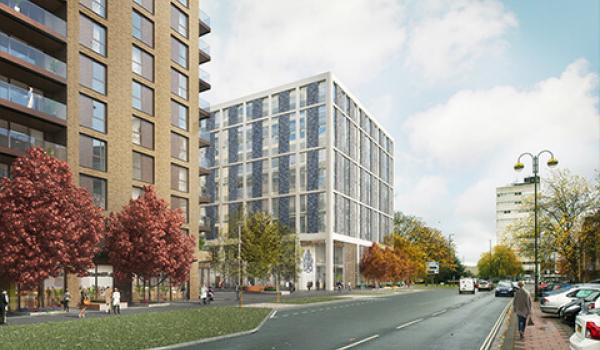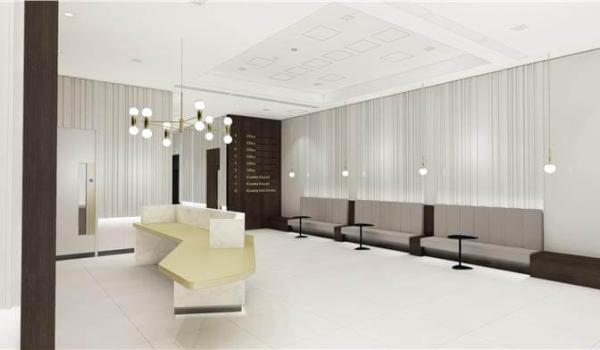- Developer: Westrock
- Status: Completed
- Website: Not specified
- Type: Mixed-use
The new Town Hall opened in March 2023.
The building:
- Will secure the council’s finances through the ability to generate new revenue from commercial office tenants whilst achieving significant savings on the council’s current running costs
- Provides a better, fit-for-purpose building for customers, staff and councillors
- Contributes to achieving the council’s wider ambitions around affordable housing, post-COVID economic recovery, and tackling climate change
The wider regeneration scheme also includes a District Heat Network, which is already operational, and will include new flats, a new public square, public realm improvements and ground floor commercial space for a restaurant or café.
Timescales
- Full Council agreed outline agreement – February 2017
- Public consultation – July 2017
- Planning application submitted – December 2017
- Planning permission granted – June 2018
- Development agreement between Crawley Borough Council and Westrock signed – autumn 2018
- Phase one housing (91 flats to the west of the Town Hall) completed – August 2021
- Demolition of part of the existing Town Hall complex – November 2019
- Construction of the new Town Hall started – spring 2020
- Letting agent appointed – June 2020
- Completion of Town Hall – February 2022
- Grade A commercial space available from spring 2022
District Heat Network
Phase one of Crawley’s first District Heat Network (DHN) has been completed.
The DHN, which is owned by Crawley Borough Council and operated by Pinnacle Power, comprises a flue, energy centre with combined heat and power (CHP) plant and a control room on the Town Hall redevelopment site.
It supplies heat and hot water to 91 flats in Geraint Thomas House, 128 homes in John Brackpool Close, the new Town Hall and The Create Building. It will do the same for the proposed residential development to be sited on the location of the former Town Hall.
In addition, it significantly reduces energy and carbon emissions for both Crawley Borough Council and organisations connecting to the DHN, as generating electricity locally using a CHP plant allows waste heat to be captured and used to heat buildings or produce hot water.
The projected annual carbon savings for the DHN, compared to individual gas boilers, for the whole network over 25 years is 102 tonnes of CO2 per year.
It’s another important step towards the council meeting its carbon reduction targets – emissions reduced by at least 50 per cent and as close to net zero as possible by 2030, and to reach net zero by 2040 at the very latest.
The council is already looking towards expanding the town centre heat network and decarbonising it further. A business case for the phase two expansion of the heat network is being worked on to allow further properties across the town centre to benefit from affordable heat. The study is also focused on switching from gas to a low carbon heat source, such as air source heat pumps


